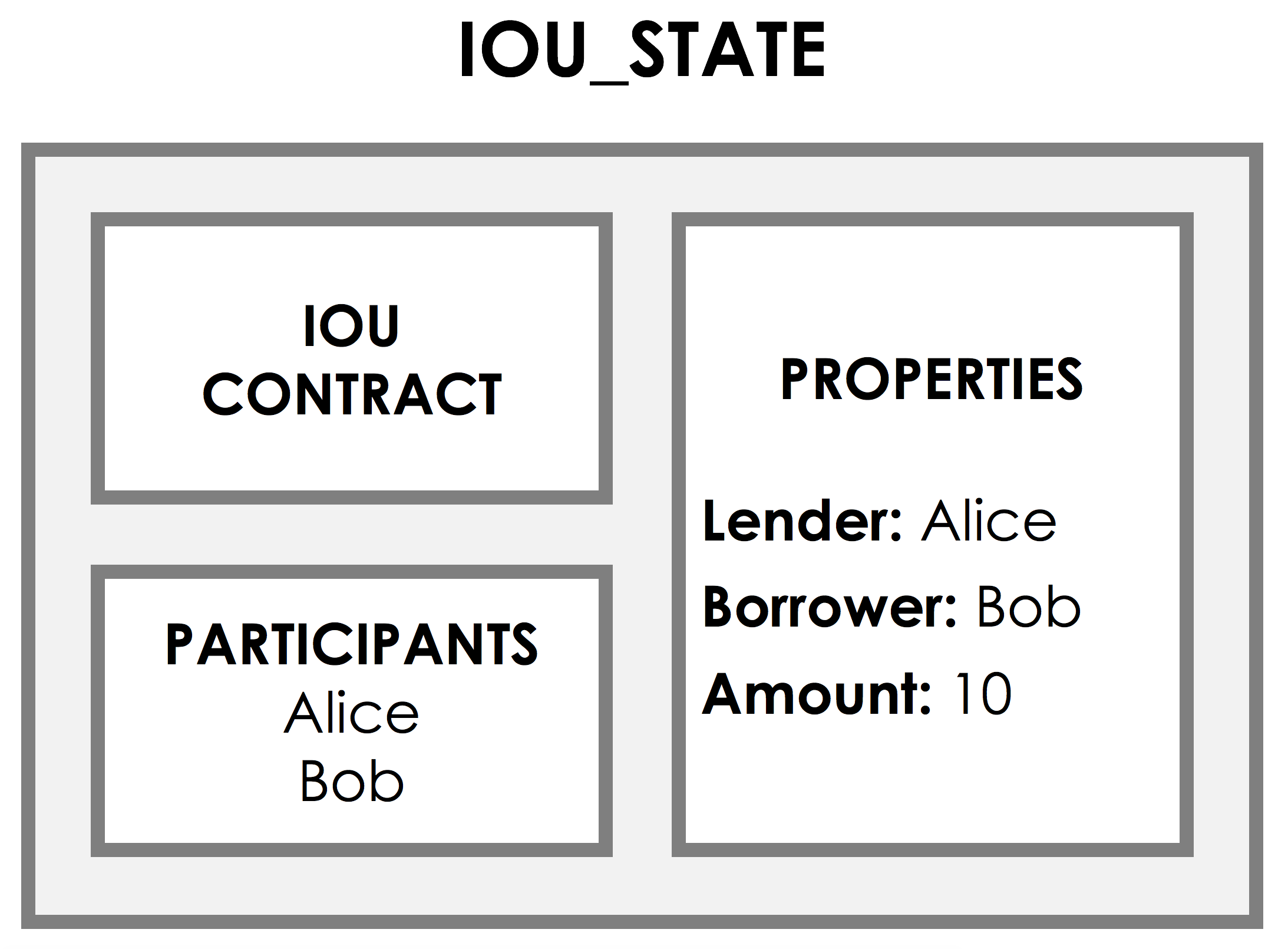Introduction¶
By this point, your dev environment should be set up, you’ve run your first CorDapp, and you’re familiar with Corda’s key concepts. What comes next?
If you’re a developer, the next step is to write your own CorDapp. Each CorDapp takes the form of a plugin that is installed on one or more Corda nodes, and gives them the ability to conduct some new process - anything from issuing a debt instrument to making a restaurant booking.
Our use-case¶
Our CorDapp will seek to model IOUs on ledger. An IOU – short for “I Owe yoU” – records the fact that one person owes another a given amount of money. We can imagine that this is potentially sensitive information that we’d only want to communicate on a need-to-know basis. This is one of the areas where Corda excels - allowing a small set of parties to agree on a fact without needing to share this fact with everyone else on the network, as you do with most other blockchain platforms.
To serve any useful function, a CorDapp needs three core elements:
- One or more states – the shared facts that will be agreed upon and stored on the ledger
- One or more contracts – the rules governing how these states can evolve over time
- One or more flows – the step-by-step process for carrying out a ledger update
Our IOU CorDapp is no exception. It will have the following elements:
State¶
The states will be IOUStates, with each instance representing a single IOU. We can visualize an IOUState as follows:
Contract¶
Our contract will be the IOUContract, imposing rules on the evolution of IOUs over time:
- Only the creation of new IOUs will be allowed
- Transferring existing IOUs or paying off an IOU with cash will not be allowed
However, we can easily extend our CorDapp to handle additional use-cases later on.
Flow¶
Our flow will be the IOUFlow. It will allow a node to orchestrate the creation of a new IOU on the ledger, via the following steps:
In traditional distributed ledger systems, where all data is broadcast to every network participant, you don’t even think about this step – you simply package up your ledger update and send it out into the world. But in Corda, where privacy is a core focus, flows are used to carefully control who sees what during the process of agreeing a ledger update.
Progress so far¶
We’ve sketched out a simple CorDapp that will allow nodes to confidentially agree the creation of new IOUs.
Next, we’ll be taking a look at the template project we’ll be using as a base for our work.

